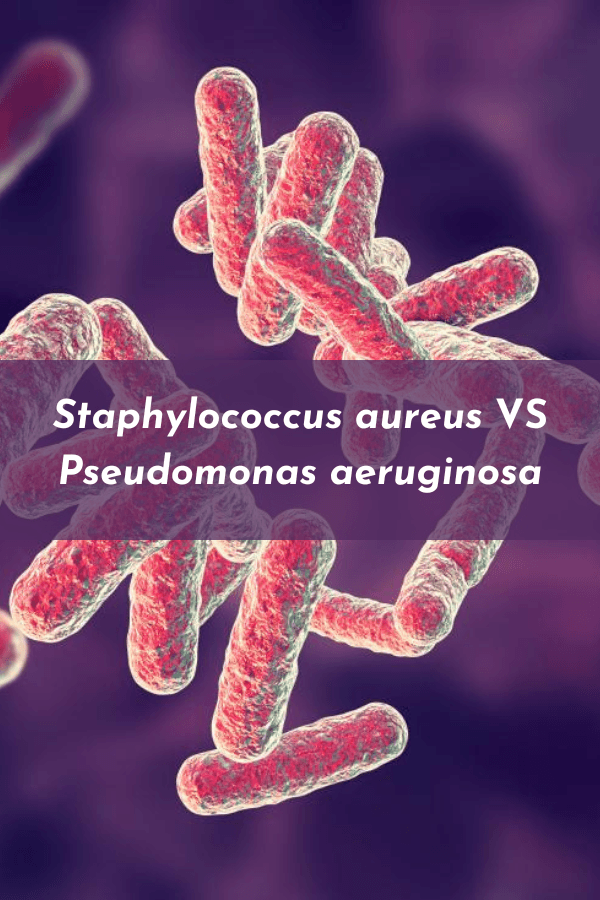The differences and similarities between Staphylococcus aureus and Pseudomonas aeruginosa are not farfetched since the dawn of voluminous research.
Evidently, S. aureus and Pseudomonas aeruginosa are more similar than oftentimes admitted.
For instance, most commonly, Pseudomonas aeruginosa and Staphylococcus aureus are co-isolated from the same infection.
When given a detailed look, these are the results you will find.
Similarities between Staphylococcus aureus and Pseudomonas aeruginosa?
- Cystic fibrosis (CF) patients are frequently infected with Pseudomonas aeruginosa and Staphylococcus aureus, both of which are associated with poor clinical outcomes.
- Co-infection between these two bacteria promotes interaction between them.
- Staphylococcus aureus including methicillin-resistant S. aureus (MRSA) has the propensity to form biofilms.
- An enduring biofilm can be developed by P. aeruginosa after extensive colonization.
- S. aureus has been linked to major antibiotic-resistance cases, and methicillin-resistant S aureus (MRSA) is one of the most common antibiotic-resistant strains.
- Aeruginosa is known for its intrinsic resistance to many antibiotics, as well as its ability to acquire mutations that enable it to become more resistant to those antibiotics.
- Staphylococcal infections, caused mainly by S aureus, are contracted by about 500,000 hospital patients every year in the United States.
- A common cause of hospital and clinic cross-infections is the presence of Pseudomonas aeruginosa on the surfaces of medical equipment, including catheters, that thrive on moist surfaces.
- There are three major types of toxins produced by S. aureus: pore-forming toxins (PFTs), exfoliative toxins (ETS), and superantigens (SAgs).
- There are a wide variety of extracellular toxins produced by Pseudomonas aeruginosa, including phytotoxic factor, pigments, hydrocyanic acid, proteolytic enzymes, phospholipase, enterotoxin, an exotoxin, and slime.
- P. aeruginosa is most commonly co-isolated with Staphylococcus aureus from chronic skin wound infections.
- It has been possible to identify bacteria directly from patient samples using Pseudomonas aeruginosa and Staphylococcus aureus biomarkers, which are associated with pathogenesis.
How is Pseudomonas aeruginosa different from other Staphylococcus aureus?

- In addition to being Gram-negative, asporogenous, and monoflagellated, Pseudomonas aeruginosa possesses a rod-shaped outer layer.
- Staphylococcus aureus is a gram-positive spherical bacteria, known for its virulence.
- P. aeruginosa is not as virulent as Staphylococcus aureus.
- Staphylococcus aureus is virulent and it’s responsible for over 35 diseases with some being dangerous, deadly, and highly contagious.
- Pseudomonas is a commonly found bacteria in soil and water, particularly in arid regions.
- S. aureus is a normal inhabitant of the lower reproductive tract, the nose, and the skin.
What Next?
There’s no research that exhaustively dissects the total differences or similarities between these two bacteria.
But given normal circumstances, the outlined points here would suffice in providing an irresistible scientific argument that these two bacteria are of great economic importance to man.
